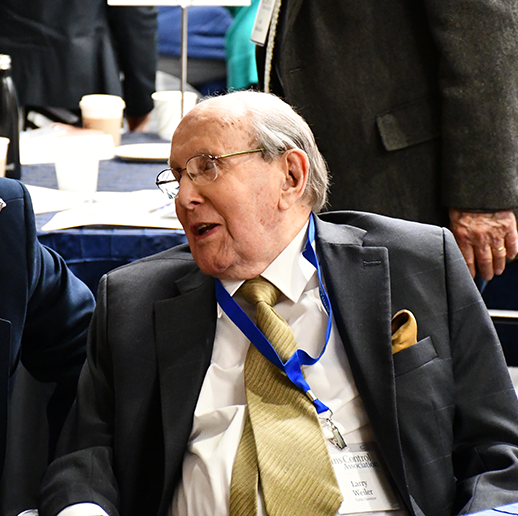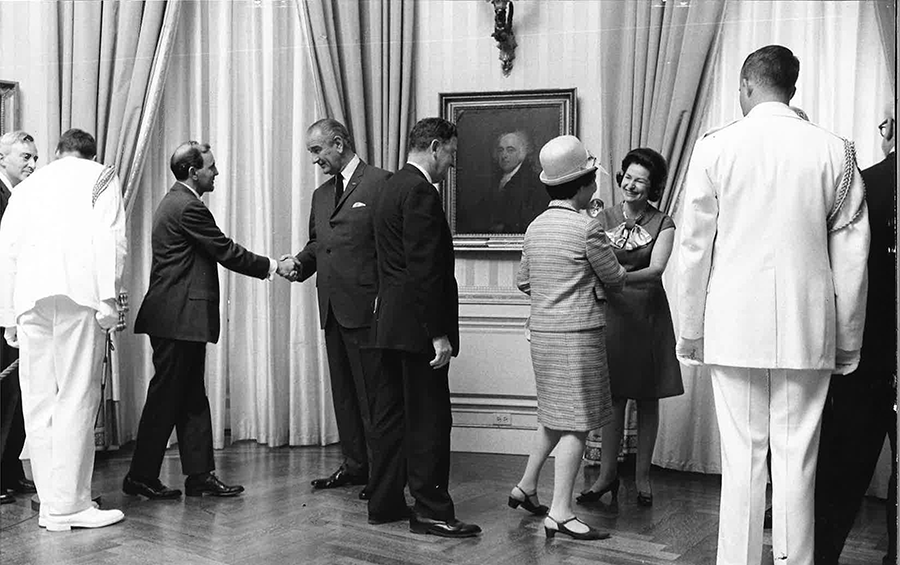Lawrence D. Weiler (1920–2019)
April 2019
By Daryl G. Kimball
Lawrence D. Weiler, an architect of the first major nuclear arms control, risk reduction, and nonproliferation agreements, died February 24. Throughout his 98 years, Weiler was often in the right place at the right time, including during his service to six presidents, from Dwight Eisenhower to Jimmy Carter.
 Born in Salt Lake City, Weiler studied at the University of Utah, where he failed to top his class, just missing out by one spot to Mary Recore, who would later become his wife of 72 years.
Born in Salt Lake City, Weiler studied at the University of Utah, where he failed to top his class, just missing out by one spot to Mary Recore, who would later become his wife of 72 years.
After his decorated World War II Army service, he earned his master’s and doctorate degrees in political science at Stanford University.
His arms control career began at the State Department in 1952, and soon thereafter, he served on the staff of Harold Stassen, the special assistant for disarmament to Eisenhower.
In the 1960s, Weiler helped establish the Arms Control and Disarmament Agency, and he was a key member of the U.S. negotiating team that concluded the 1963 Hotline Agreement, the first legally binding nuclear risk reduction agreement of its kind.
Weiler participated in negotiating the nuclear Nonproliferation Treaty (NPT) from 1966 to 1968. Fifty years later, he shared his thoughts on the NPT’s legacy with Arms Control Today. (See ACT, October 2017.)
Following the NPT’s completion, Weiler helped negotiate the 1972 Anti-Ballistic Missile Treaty and the Strategic Arms Limitation agreement, the first U.S.-Soviet strategic arms control pacts.
 Next came a faculty stint at Stanford before returning to governmental service in 1977 as U.S. ambassador and special coordinator for the UN Special Session on Disarmament.
Next came a faculty stint at Stanford before returning to governmental service in 1977 as U.S. ambassador and special coordinator for the UN Special Session on Disarmament.
Weiler returned to academia at George Washington University, publishing frequently, including in Arms Control Today. Weiler was never afraid to advocate for the correct position even when it was unpopular. For example, he was an early proponent of a U.S. no-first-use policy. In February 1983, he wrote in The Bulletin of the Atomic Scientists, “Contrary to the general impression, the idea of no-first-use is as old as nuclear weapons. And in a very real sense, the first advocate of outlawing and forgoing use, or first use, was the U.S. government. Thus, the idea is neither revolutionary nor ‘un-American.’”
In retirement, Weiler maintained an active interest in nuclear issues. When President George W. Bush visited Weiler’s retirement home in 2006 to discuss health care with the residents, Weiler challenged him to consider adopting a no-first-use policy. He also told Bush that the controversial U.S. deal for Indian nuclear cooperation threatened the NPT’s long-term viability. Broadcast live on C-SPAN, the exchange elicited national news coverage.
Long into his “retirement,” Weiler regularly attended Arms Control Association events; and in the summer of 2018, Larry shared some thoughts with association members:
Over the 65 years of my involvement in the field of arms control, I have seen how effective nonproliferation agreements have reduced the danger of nuclear war and curbed the spread of nuclear weapons. Though we have achieved progress, our work is not over. The global nonproliferation and disarmament regime that
many in and outside the government have helped to build is at risk, but I am still optimistic. Why? Because even during the dark days of the Cold War, when it didn't seem like things were possible, we persisted. American and Soviet negotiators engaged with one another in an effort to reduce nuclear risks. If we could do it then, we can also find practical ways to tackle today’s tough nuclear challenges.
